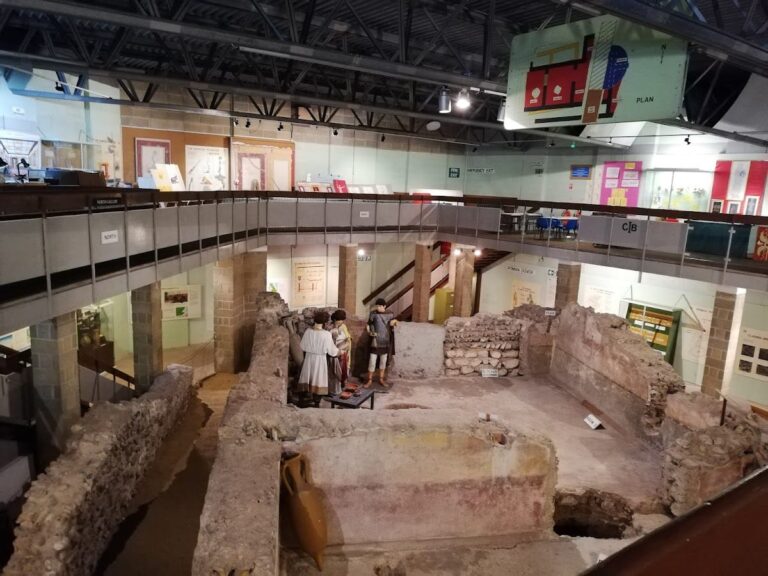Canterbury Castle: A Norman Medieval Fortress in the United Kingdom
Visitor Information
Google Rating: 3.6
Popularity: Low
Google Maps: View on Google Maps
Official Website: www.canterbury.gov.uk
Country: United Kingdom
Civilization: Medieval European
Remains: Military
History
Canterbury Castle is a medieval fortress situated in Canterbury, United Kingdom, originally built by the Normans following their conquest of England. Its establishment was closely linked to the need to control a key Roman road connecting Dover to London, known in later times as Watling Street.
The castle began as a wooden motte-and-bailey structure erected around 1066, shortly after the Battle of Hastings. This initial timber fortification stood on an earthwork mound near what is now Dane John Gardens. Local tradition suggests this mound may have been a Roman burial site, and the castle’s location incorporated the nearby Roman city wall as part of its defenses. The name “Dane John” is believed to derive from the Old French word “donjon,” meaning the castle’s keep or main tower.
During the early 12th century, under the reign of King Henry I (approximately 1100 to 1135), the wooden keep was replaced by a large stone structure. This significant construction phase is recorded in contemporary documents, including the Domesday Book. The castle’s defenses were expanded in 1166 by the addition of an eastern courtyard, known as a bailey, enhancing its military capacity.
In the 13th century, the fortress transitioned from a purely military installation to the county’s main prison. During the First Barons’ War, a conflict involving rebel English barons and the French monarchy in the early 1200s, Canterbury Castle was captured by French forces. Later in 1380, a new gate was built, reflecting ongoing modifications and the castle’s persistent role in regional affairs.
By the 19th century, the castle had lost its defensive and administrative functions. It was acquired by a gas company and repurposed for industrial use, leading to significant damage. Notably, the upper floor of the stone keep was demolished to accommodate gas storage facilities. Despite these changes, the castle’s remaining ruins survived and came into public ownership in later years.
Remains
The surviving features of Canterbury Castle illustrate its evolution from a wooden fortification to a robust stone stronghold. The site’s focal point is the large stone keep, constructed mainly from flint rubble and sandstone blocks, among the earliest of such masonry keeps in England. The keep’s base measures about 29.4 meters by 25.5 meters, originally rising to an estimated 24 meters in height, making it a prominent and massive structure visible across the surrounding area.
Adjacent to the keep lies the castle’s motte, a raised rectangular earth mound that remains clearly visible within Dane John Gardens. This motte formed part of the castle’s defensive strategy and is believed to incorporate an earlier Roman burial mound, linking the site to Canterbury’s ancient past. One side of the castle’s bailey was formed by the Roman city wall, which integrated the site into the broader Roman urban layout.
The castle’s layout included an eastern bailey added during the 12th century, which served as an enclosed courtyard. This bailey featured two main gates: a northern entrance that led towards the city and a southern one that opened onto agricultural fields, indicating the castle’s role in controlling access and movement.
Although the upper floor of the keep was lost during the 19th century when the castle was adapted for gas storage, much of the stone structure remains visible today. The existing ruins are protected as a Grade I listed historic building, ensuring its preservation for future generations. While no detailed interior decorations or artefacts such as pottery or tools have been documented, the archaeological remains at the site provide clear evidence of its medieval military and administrative functions.







